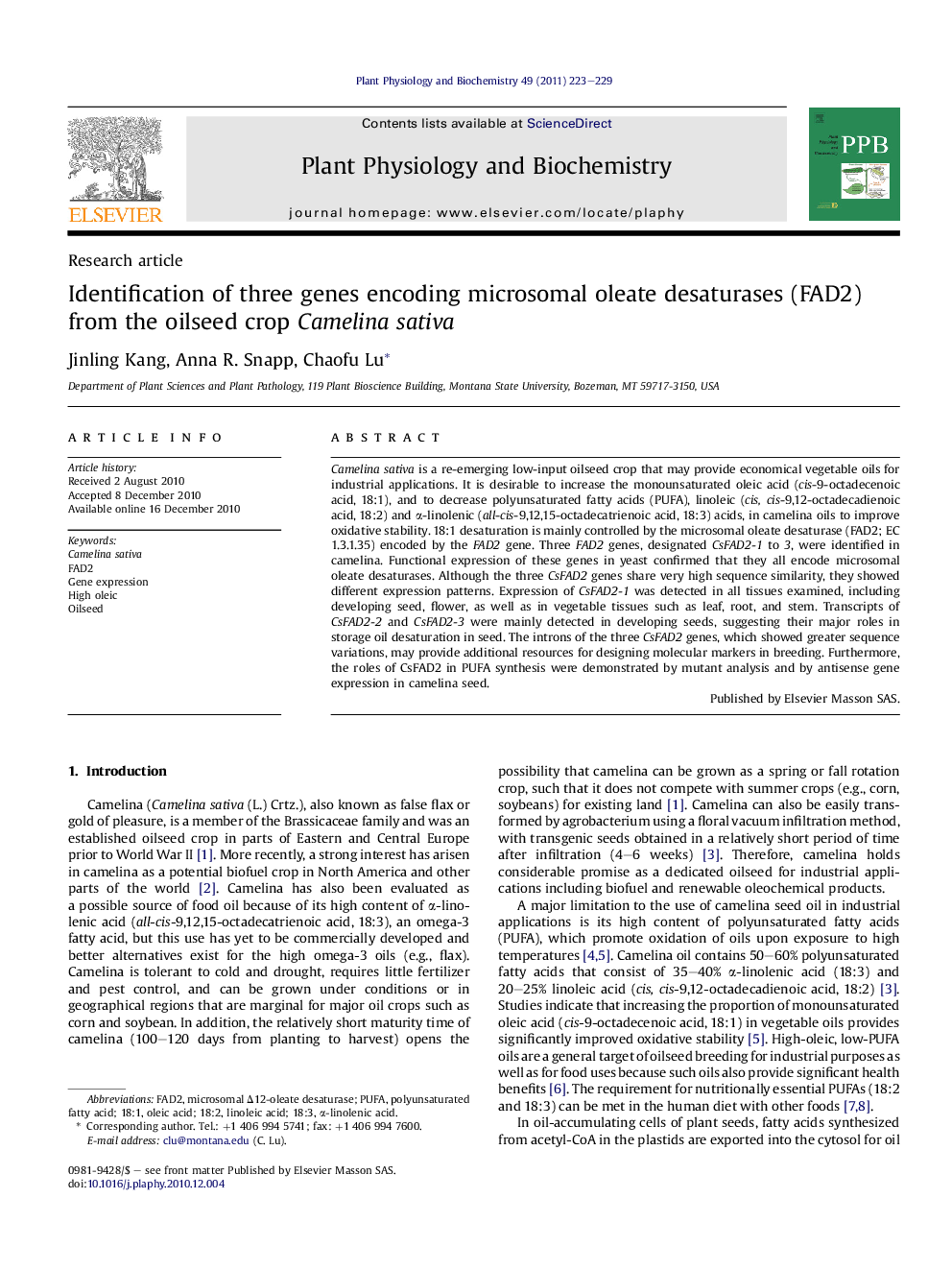| Article ID | Journal | Published Year | Pages | File Type |
|---|---|---|---|---|
| 2016491 | Plant Physiology and Biochemistry | 2011 | 7 Pages |
Camelina sativa is a re-emerging low-input oilseed crop that may provide economical vegetable oils for industrial applications. It is desirable to increase the monounsaturated oleic acid (cis-9-octadecenoic acid, 18:1), and to decrease polyunsaturated fatty acids (PUFA), linoleic (cis, cis-9,12-octadecadienoic acid, 18:2) and α-linolenic (all-cis-9,12,15-octadecatrienoic acid, 18:3) acids, in camelina oils to improve oxidative stability. 18:1 desaturation is mainly controlled by the microsomal oleate desaturase (FAD2; EC 1.3.1.35) encoded by the FAD2 gene. Three FAD2 genes, designated CsFAD2-1 to 3, were identified in camelina. Functional expression of these genes in yeast confirmed that they all encode microsomal oleate desaturases. Although the three CsFAD2 genes share very high sequence similarity, they showed different expression patterns. Expression of CsFAD2-1 was detected in all tissues examined, including developing seed, flower, as well as in vegetable tissues such as leaf, root, and stem. Transcripts of CsFAD2-2 and CsFAD2-3 were mainly detected in developing seeds, suggesting their major roles in storage oil desaturation in seed. The introns of the three CsFAD2 genes, which showed greater sequence variations, may provide additional resources for designing molecular markers in breeding. Furthermore, the roles of CsFAD2 in PUFA synthesis were demonstrated by mutant analysis and by antisense gene expression in camelina seed.
Research highlights► Camelina sativa contains three genes encoding microsomal oleate desaturase, FAD2. ► Sequences of three CsFAD2 are highly similar in the coding region, but greatly varied in introns. ► Expression of three CsFAD2 genes are differentially regulated. ► CsFAD2 genes do not compensate for each other in seeds.
